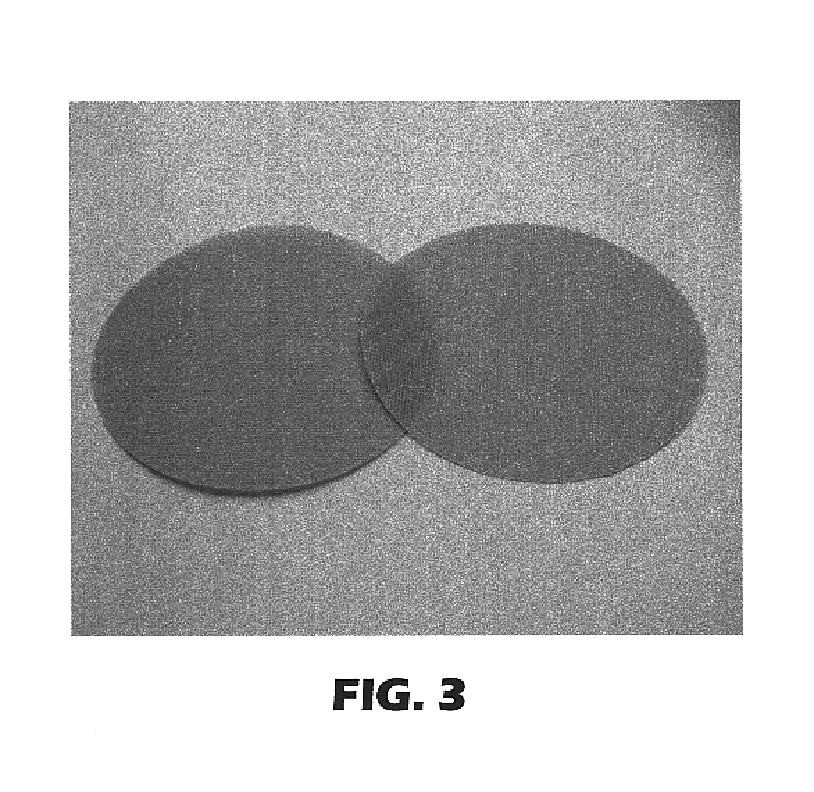Coated abrasive article
a technology of abrasive articles and coatings, applied in the direction of abrasive equipment, metal-working equipment, manufacturing tools, etc., can solve the problems of differential shrinkage and/or expansion of backings, normal abrasive layers, and typical shrinkage of backings and abrasives, so as to reduce thermal energy
- Summary
- Abstract
- Description
- Claims
- Application Information
AI Technical Summary
Benefits of technology
Problems solved by technology
Method used
Image
Examples
examples 15-26
Coated abrasive discs were prepared using Make Resins VI-XIII according to the method described in Example 6 to give Examples 15-22, respectively. Examples 23-26 were prepared using Make Resins IX-XII according to the method described in Example 6, except that a curing web speed of 27.4 meters per minute was used corresponding to an actinic radiation dose of 0.5 J / cm.sup.2. Table 7 (below) shows mineral adhesion as a function of make resin formulation and processing speed. The Mineral Adhesion Rating in Table 7 was determined by rubbing the abrasive surface with a thumb and using the scale (1-5): 5=excellent adhesion, little or no particles rubbed off; 4=very good, small amount of particles rubbed off; 3=good, many particles rubbed off; 2=fair, most of the particles rubbed off; 1=poor, 0=all particles rubbed off, no adhesion. In Examples 20-21 and 25-26, drop in mineral adhesion is attributed to rapid cure of the binder precursor prior to being coated with the abrasive mineral.
PUM
| Property | Measurement | Unit |
|---|---|---|
| temperature | aaaaa | aaaaa |
| length of time | aaaaa | aaaaa |
| temperatures | aaaaa | aaaaa |
Abstract
Description
Claims
Application Information
 Login to View More
Login to View More - R&D
- Intellectual Property
- Life Sciences
- Materials
- Tech Scout
- Unparalleled Data Quality
- Higher Quality Content
- 60% Fewer Hallucinations
Browse by: Latest US Patents, China's latest patents, Technical Efficacy Thesaurus, Application Domain, Technology Topic, Popular Technical Reports.
© 2025 PatSnap. All rights reserved.Legal|Privacy policy|Modern Slavery Act Transparency Statement|Sitemap|About US| Contact US: help@patsnap.com



